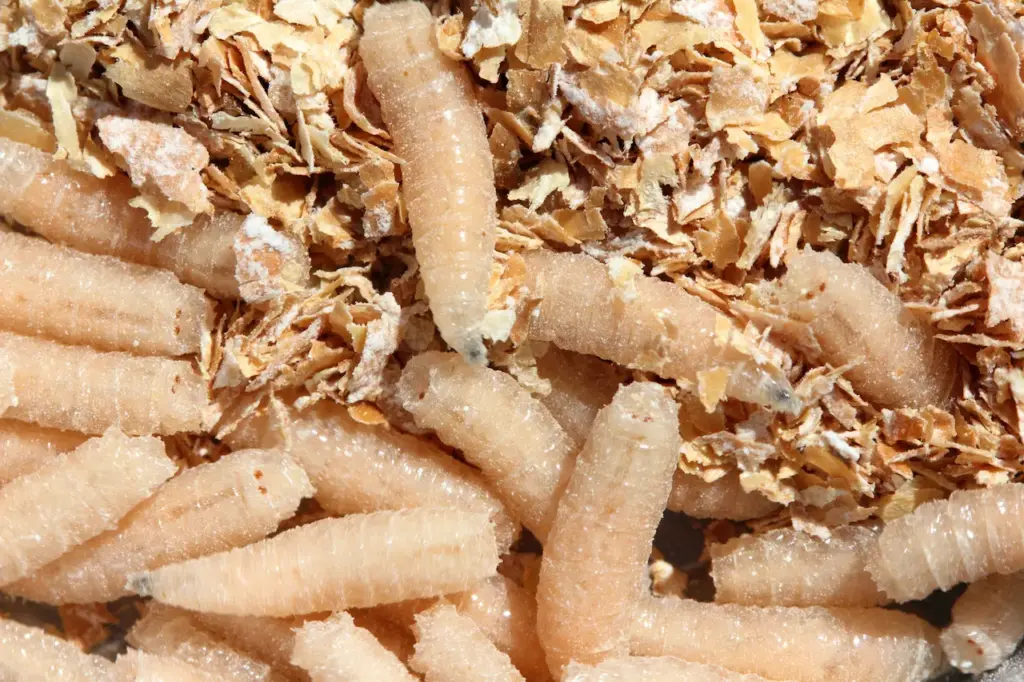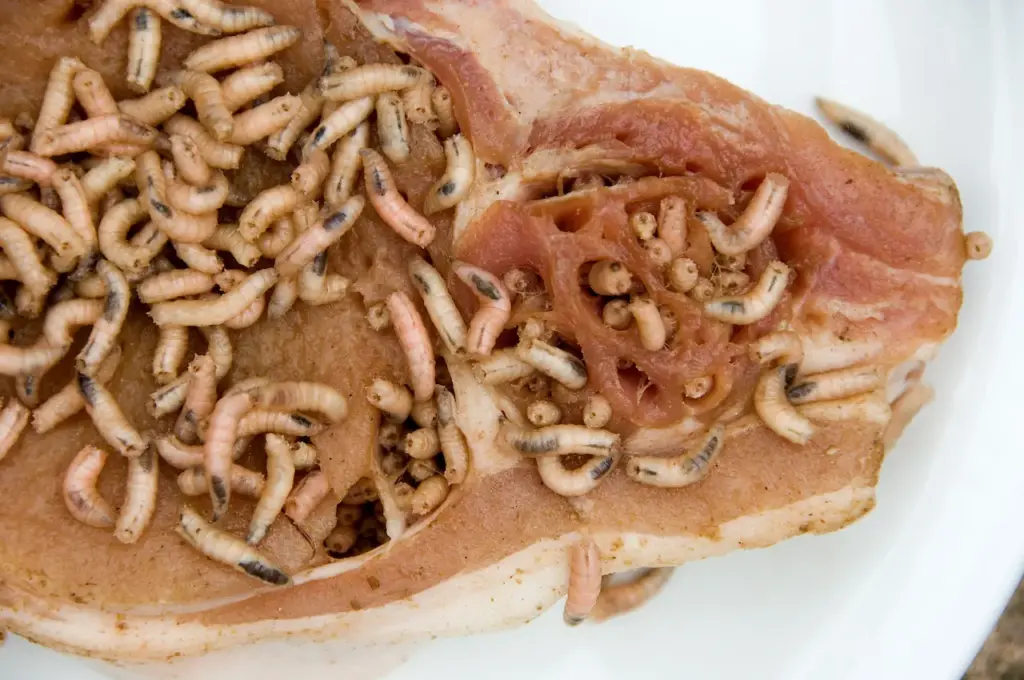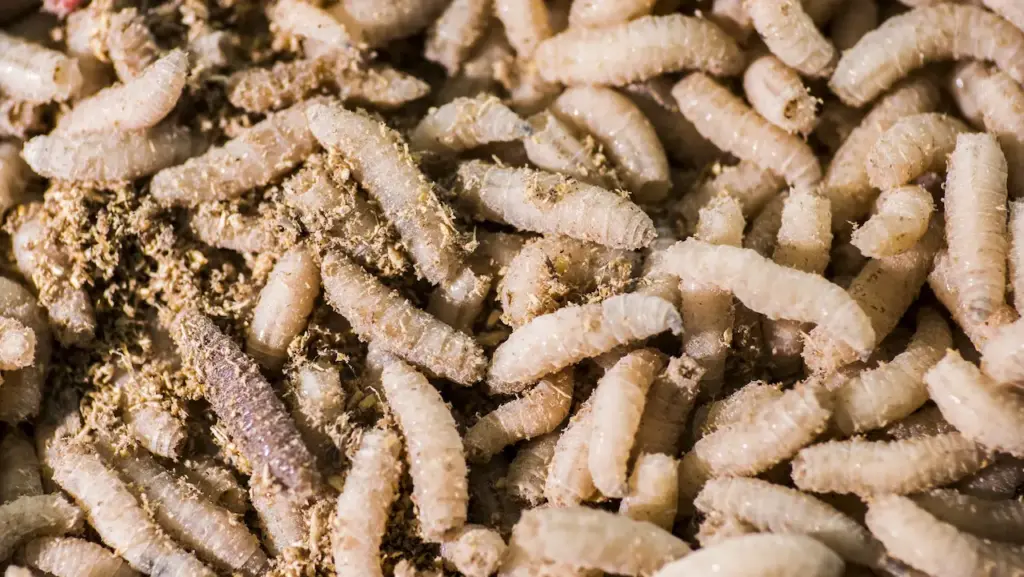What Eats Maggots?
Categories
- Accipitridae (1)
- Acrididae (1)
- Algae (2)
- Alligatoridae (1)
- Amoebidae (1)
- Amphibians (3)
- Anatidae (1)
- Anguillidae (1)
- Arachnids (2)
- Bears (2)
- Big Cats (3)
- Birds (13)
- Bovidae (5)
- Bufonidae (1)
- Camelids (1)
- Cameras (1)
- Canines (13)
- Caridea (1)
- Carnivora (10)
- Castoridae (1)
- Cats (5)
- Cebidae (1)
- Cephalopod (1)
- Cervidae (2)
- Cetacean (1)
- Chondrichthyes (1)
- Crocodilia (2)
- Crustaceans (4)
- Culicidae (1)
- Cyaneidae (1)
- Dasypodidae (1)
- Dasyurids (1)
- Deer (1)
- Delphinidae (1)
- Desktop (1)
- Didelphidae (1)
- Dinosaurs (1)
- Dogs (13)
- Dolphins (2)
- Echinoderms (1)
- Education (10)
- Elephantidae (1)
- Equine (1)
- Erethizontidae (1)
- Erinaceidae (1)
- Farming (1)
- Felidae (5)
- Fish (5)
- Food Chain (31)
- Food Web (2)
- Formicidae (1)
- Frugivore (1)
- Gaming (1)
- Gastropods (1)
- Giraffids (1)
- Great Apes (2)
- Health Conditions (3)
- Herbivore (4)
- Hi-Fi (1)
- Hippopotamidae (1)
- Hominidae (1)
- Insects (10)
- Invertebrates (2)
- Keyboards (1)
- Laptops (1)
- Leporidae (1)
- Mammals (23)
- Marsupials (4)
- Mephitidae (1)
- Microchiroptera (1)
- Mollusks (2)
- Mongoose (1)
- Muridae (1)
- Nocturnal Animals (1)
- Odobenidae (1)
- Omnivore (2)
- Phasianidae (1)
- Phocidae (1)
- Plankton (1)
- Plants (2)
- Primate (1)
- Ranidae (1)
- Reptiles (7)
- Rhinocerotidae (1)
- Rodents (5)
- Salamandridae (1)
- Scarabaeidae (1)
- Sciuridae (2)
- Sharks (1)
- Shellfish (1)
- Sound (1)
- Spheniscidae (1)
- Suidae (1)
- Superfamily Papilionoidea (1)
- Theraphosidae (1)
- What Eats (5)
What Eats Maggots? What Do Maggots Eat?
Maggots are the larval form of various flies. They are often seen feeding on decaying organic matter. But what preys on maggots themselves? And what sustains maggots as they develop? In this article, we will explore the diet and predators of these fly larvae.
What Eats Maggots?
Many animals consume maggots as a food source:
Birds
Birds are one of the main predators of maggots. Species such as robins, starlings, magpies, crows, and chickens actively hunt for this larva. The maggots provide a high-fat, protein-rich meal for birds.
Maggots on the soil surface or in shallow carcasses are easy picking for these birds. Their strong beaks allow them to tear into the larval mass and consume them by the mouthfuls. Birds are so reliant on maggots that a decline in fly numbers can affect their breeding.
Rodents
Rodents like rats, shrews and mice feed on maggots. Shrews especially depend on these larvae for their high-energy nutrition needs.
Maggots are soft-bodied and easy for rodents to chew and digest. These small mammals can squeeze into tight spaces where maggots congregate. Their excellent sense of smell also helps them sniff out fly larvae.
Amphibians and Reptiles
Frogs, toads, and lizards capture and eat maggots. The larvae provide essential proteins and fats for these cold-blooded vertebrates.
Toads parking themselves beside a maggot-infested carcass can consume hundreds of larvae in one sitting. Maggots are also part of the diet of certain reptiles like lizards and snakes.
Ants
Ants attack the vulnerable maggots by biting into their soft bodies and spraying acid. Worker ants march en masse to overwhelm isolated maggot groups. The larvae are then carried back to the colony as a protein-rich prize.
The maggots’ immobility makes them easy pickings for these insects. Voracious fire ants can devastate fly larvae populations when they discover them.
Beetles
Ground beetles and rove beetles actively pursue maggots. Their sharp mandibles make short work of the larva’s soft bodies. Some species, like the hister beetle, even specialize in feeding on maggots.
In general, beetles consume maggots that are exposed or on the move. The hidden and buried maggots are safe from these predators.
Spiders
Maggots caught in spider webs can fall prey to the web’s owner. Spider species like wolf spiders and ground spiders hunt for maggots to inject with venom or wrap them in silk.
The immobilized maggots are then eaten at the spider’s leisure. However, spiders rarely seek out maggots specifically as a food item.
Centipedes
Centipedes use their venomous claws to attack maggots. They give a poisonous bite to subdue the maggot before consuming them.
Larger centipedes even feed on maggots within the carrion by using their sharp claws to cut into the flesh. They seem to prefer fly larvae over other invertebrates.
What Do Maggots Eat?
Maggots are saprophagous insects, meaning they feed on decaying organic matter. Primarily, they eat:
Dead Animal Matter
The most common food source for maggots is carrion or dead animals. Maggots infest animal remains that contain moist tissues rich in proteins and fats.
Carrion provides an abundant, immobile feast for the larvae. They tunnel through the decaying flesh, consuming it from within. The maggots can reduce a large carcass to bones in a short span.
Manure and Excrement
Maggots thrive on the fecal matter from animals like cattle, horses, and poultry. The microbes breaking down the manure also serve as a food source.
In fact, some maggot species specifically target manure to complete their life cycles. The nutritious excrement sustains them through the larval stages.
Garbage and Spoilt Food
Maggots are a common sight of food waste like meat, fruits, and vegetables in garbage bins or compost piles. They feast on these decaying leftovers rich in organic content.
The moist, warm environment is ideal for maggots to develop while gorging on the rotten scraps.
Biofilms
Maggots eat microbes and biofilms growing on decaying matter. Biofilms are thin layers of bacteria, yeasts, and fungi clinging to surfaces.
The microbes breaking down the dead tissue also act as a vital food source for the foraging maggot larvae.
Living Plant Matter
Some maggot species feed on living plant material and can become pests. Cabbage maggots attack the roots of cabbage and other brassica crops. Maggots of the onion fly damage onion bulbs and related vegetables.
These larvae tunnel into the fleshy plant parts to feed, damaging the crops. Certain control measures are needed to check maggot infestations in home gardens and farms.
Special Diets of Different Maggot Species
While most maggots are saprophagous, some species have adapted to special diets:
Parasitic Maggots
Some maggots are parasitic on living animals. Myiasis is the condition where maggots infest and feed on the tissue of living vertebrates. Some species can affect humans, too.
The maggots bite into the host’s flesh and feed on the blood and tissue secretions. In severe cases, they can even eat into internal organs. Maggots of the human botfly cause myiasis in people.
Predatory Maggots
Soldier flies, and their maggot larvae are unique because they are carnivorous. They consume small invertebrates like caterpillars, aphids, and insect eggs.
The maggots have mouth hooks to snare living prey and voraciously devour them. Their appetite for pests like caterpillars makes them beneficial insects.
Honeydew-Feasting Maggots
Some maggots have symbiotic relationships with aphids, scale insects, and other sap-sucking bugs. The maggots feed on the sugary honeydew excreted by these insects on plants.
In exchange, the maggots offer the bugs some protection from predators. Some farmers use these special maggots as natural pest control.
Maggots as Feed
Finally, as a reversal, maggots themselves are bred commercially to feed captive animals like reptiles, amphibians, fishes, and birds. Their high nutrition profile makes them excellent feeder insects for these species.
The maggots are gut-loaded with vitamins and minerals to enhance their nutritional value as feeders. This makes them integral to the pet trade.
The Role of Maggots in Forensic Science
Maggots can play an important role in forensic investigations. They provide vital clues about death and decomposition when found on human corpses.
The stage of maggot development indicates the post-mortem interval or time elapsed since death. Maggots go through an orderly maturation process. Scientists can estimate the time of death based on the larvae present.
Maggots only feed on dead tissue, so their presence also shows if wounds were sustained before or after death. Antemortem wounds have living cells and bleed, allowing blowflies to lay eggs. Maggots only infest these pre-death wounds.
The chemicals in maggot excretions and secretions also offer clues. Their metabolites reflect the kind of tissue they have been feeding on. Analyzing these compounds provides information about corpse decomposition.
Sometimes maggots are the only entomological evidence available to forensic experts at death scenes. Identifying the species can help trace the environment the body was in. Overall, the humble maggot is a huge asset for unraveling many mysteries in forensic investigations.
Conclusion
Maggots form a vital biomass that sustains many food chains. They recycle decaying organic matter and provide nourishment for a variety of species. Birds, rodents, reptiles, amphibians, insects, arachnids, and myriapods all consume maggots as prey.
Meanwhile, maggots feast on carrion, fecal matter, detritus, biofilms, and some even parasitize the living.
Their diversity allows maggots to adapt to many ecological niches across the world. Understanding the diet and predators of maggots sheds light on their crucially important role within various ecosystems.



